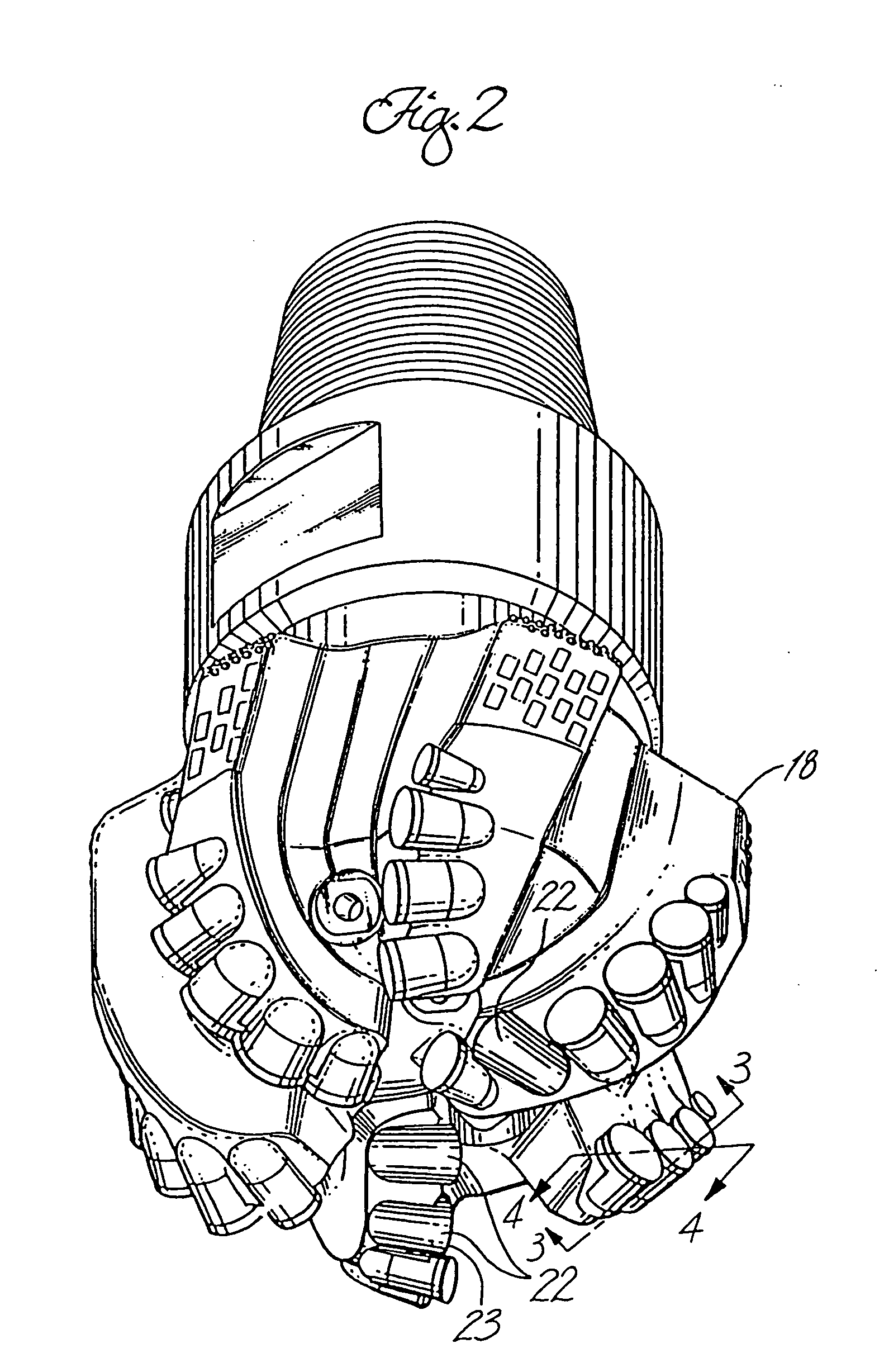Method for forming cutting elements
a technology of cutting elements and cutting edges, applied in the field of cutting elements, can solve problems such as non-uniform cross-section, and achieve the effects of increasing the residual stretch, increasing the thickness of ultra-hard materials, and increasing the delamination resistance of ultra-hard materials
- Summary
- Abstract
- Description
- Claims
- Application Information
AI Technical Summary
Benefits of technology
Problems solved by technology
Method used
Image
Examples
Embodiment Construction
[0041] The cutting elements or cutters of the present invention have a body 110 with a canted cutting face forming interface 112 (FIG. 5A). Stated differently, the interface is sloped. An ultra hard material layer 114 is formed over the canted interface. The upper surface 124 of the ultra hard material layer typically remains flat such that the thickness of the ultra hard material layer is minimum adjacent the highest point 128 on the interface and maximum adjacent the lowest point 126 on the canted face. Alternatively, the upper surface of the ultra hard material layer is dome-shaped (FIG. 5B). However, the radius of the dome-shaped surface is preferably relatively large such that the thickness of the ultra hard material layer is still maximum adjacent the lowest point 126 on the canted face. Preferably, the thinnest portion 133 of the ultra hard material layer should be in the order of 10-20% of the thickness of the thickest portion 134.
[0042] The overall length of the cutter of ...
PUM
 Login to View More
Login to View More Abstract
Description
Claims
Application Information
 Login to View More
Login to View More - R&D
- Intellectual Property
- Life Sciences
- Materials
- Tech Scout
- Unparalleled Data Quality
- Higher Quality Content
- 60% Fewer Hallucinations
Browse by: Latest US Patents, China's latest patents, Technical Efficacy Thesaurus, Application Domain, Technology Topic, Popular Technical Reports.
© 2025 PatSnap. All rights reserved.Legal|Privacy policy|Modern Slavery Act Transparency Statement|Sitemap|About US| Contact US: help@patsnap.com



